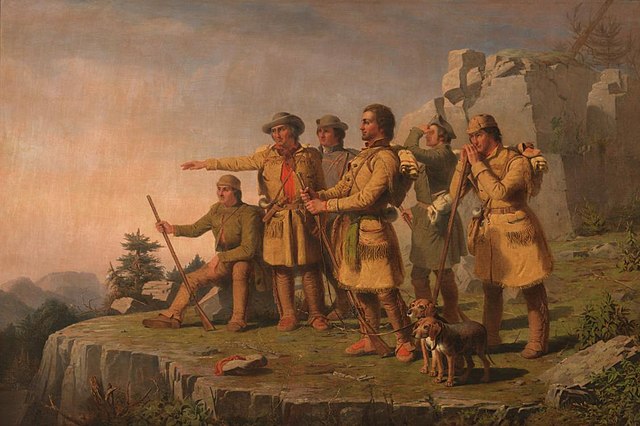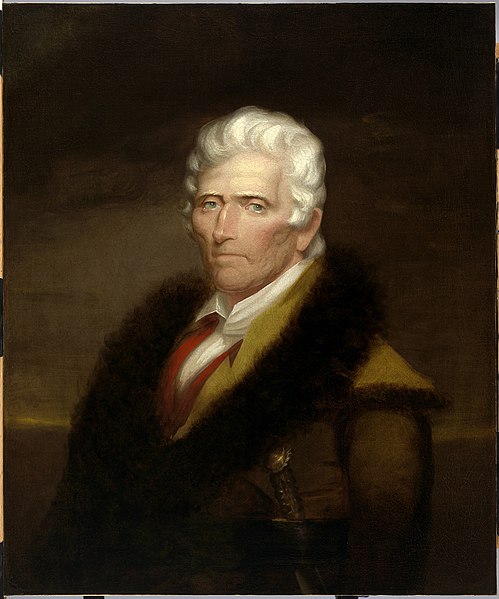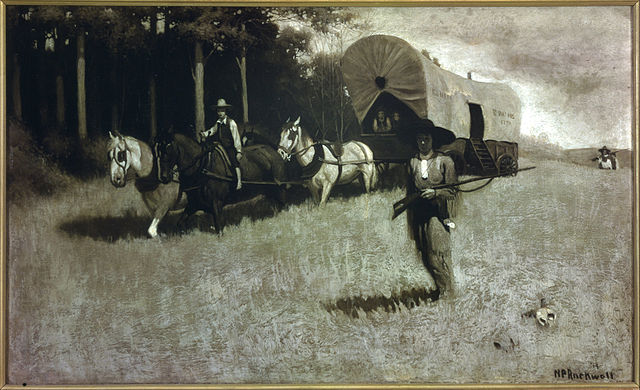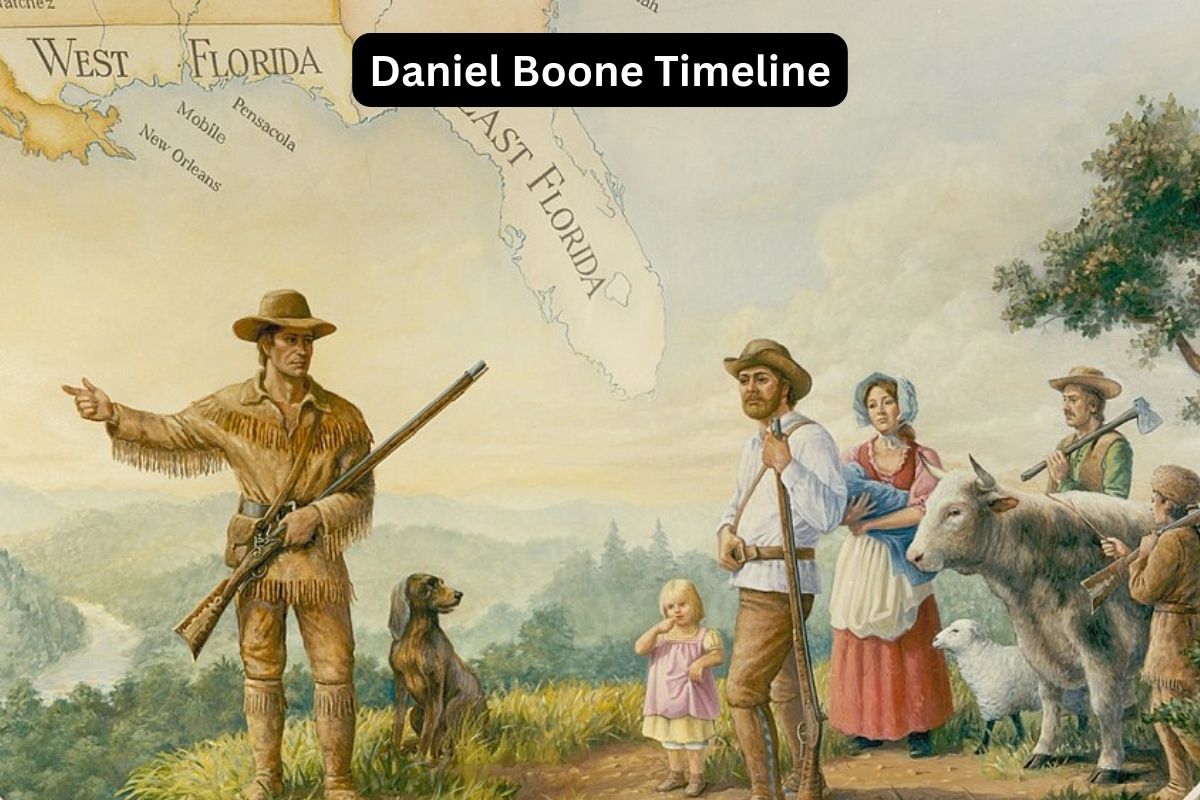Daniel Boone (1734-1820) was a renowned American frontiersman and explorer known for his role in expanding the American frontier during the late 18th century.
He led settlers into Kentucky, established Fort Boonesborough in 1775, and faced challenges like captivity and conflicts with Native Americans.
Boone’s legacy endures in American culture, symbolizing westward expansion. He passed away in 1820 in Femme Osage, Missouri.
| Date | Event |
| November 2, 1734 | Daniel Boone is born in Berks County, Pennsylvania, in the American colonies. |
| 1750s | Boone’s family moves to North Carolina, where he gains experience as a woodsman and hunter. |
| 1755 | Boone marries Rebecca Bryan. |
| 1767 | Boone leads a group of settlers through the Cumberland Gap and into the Kentucky wilderness, becoming one of the first white men to explore and settle in the region. |
| 1775 | Boone and his party establish Fort Boonesborough in present-day Kentucky. This is one of the first American settlements west of the Appalachian Mountains. |
| 1776 | Boone’s daughter Jemima and two other girls are captured by Shawnee Indians but are later rescued by Boone and a group of men. |
| 1777 | Boone is captured by British Loyalists and Shawnee warriors during a raid on Boonesborough but is later released. |
| 1780 | Boone’s wife, Rebecca, and their daughters are captured by a group of Cherokee Indians but are rescued by Boone and a party of men. |
| 1781 | Daniel Boone serves as a legislator in the Virginia General Assembly. |
| 1782 | Boone’s son Israel is killed by Native Americans, leading to increased tensions on the frontier. |
| 1792 | Kentucky becomes a state, and Boone’s land claims face legal challenges and disputes. |
| 1799 | Due to land-title issues and financial troubles, Boone moves to what is now Missouri, which was then Spanish territory. |
| 1804 | The United States acquires the Louisiana Territory from France, and Boone becomes a Spanish citizen to protect his land claims. |
| 1813 | Daniel Boone dies at the age of 85 in Femme Osage, Missouri, which was part of Spanish Louisiana at the time. His remains are later moved to Frankfort, Kentucky. |
| 1845 | Boone’s and his wife Rebecca’s remains are reinterred in the Frankfort Cemetery in Kentucky. |
Timeline of Daniel Boone
November 2, 1734: Daniel Boone is born in Berks County, Pennsylvania
He was the sixth of eleven children born to Squire Boone, a farmer and blacksmith, and Sarah Morgan Boone.
Daniel grew up in a rural farming community, where he learned essential wilderness skills, such as hunting, trapping, and woodcraft, from an early age.

1750s: Boone’s family moves to North Carolina, where he gains experience as a woodsman and hunter
In the 1750s, Boone’s family moved to the Yadkin Valley in North Carolina. It was in this region that Boone honed his skills as a frontiersman, becoming an expert marksman and woodsman.
He gained a reputation for his ability to navigate the dense forests and track game, skills that would serve him well in his later explorations.
1755: Boone marries Rebecca Bryan
At the age of 21, Daniel Boone married Rebecca Bryan. Rebecca was the daughter of a neighbor, and their marriage marked the beginning of a large and close-knit family.
The Boones would have ten children together, and the family played a significant role in Boone’s life as a frontiersman and settler.
1767: Boone leads a group of settlers through the Cumberland Gap and into the Kentucky wilderness
In 1767, Boone led a small group of settlers, including his own family, through the Cumberland Gap, a natural passageway in the Appalachian Mountains.
They ventured into the wilderness of Kentucky, a region known for its fertile land and abundant game. Boone’s expedition marked one of the earliest westward migrations of European settlers beyond the Appalachian Mountains.
1775: Boone and his party establish Fort Boonesborough in present-day Kentucky.
This is one of the first American settlements west of the Appalachian Mountains. This fort became a crucial outpost for early American settlers in the region.
It served as a defense against Native American attacks and as a base for further exploration and settlement. Boone’s leadership and knowledge of frontier life were instrumental in the survival and growth of the fort’s community.
1776: Boone’s daughter Jemima and two other girls are captured by Shawnee Indians but are later rescued by Boone and a group of men
Boone’s daughter, Jemima Boone, and two other girls, Fanny and Betsy Callaway, were captured by Shawnee Indians during a salt-making expedition.
Boone, along with a group of men, pursued the Shawnees and managed to rescue the girls, demonstrating his courage and determination.

1777: Boone is captured by British Loyalists and Shawnee warriors during a raid on Boonesborough but is later released
The year 1777 brought both challenges and triumphs for Daniel Boone. During this year, he was captured by a group of British Loyalists and Shawnee warriors during a surprise attack on Boonesborough.
Boone was taken captive for a short period but managed to escape. His resilience and knowledge of the wilderness played a crucial role in his escape and survival.
1780: Boone’s wife, Rebecca, and their daughters are captured by a group of Cherokee Indians but are rescued by Boone and a party of men
In 1780, another harrowing incident occurred in Boone’s life. His wife, Rebecca, and their daughters were captured by a group of Cherokee Indians while Boonesborough was under siege.
Boone, again displaying his determination and resourcefulness, organized a rescue party that successfully freed his family from captivity. This incident underscored the constant dangers faced by early settlers on the frontier.
1781: Daniel Boone serves as a legislator in the Virginia General Assembly
As the American Revolutionary War continued, Daniel Boone took on a different role. He served as a legislator in the Virginia General Assembly in 1781.
This period of political involvement showcased Boone’s adaptability, as he transitioned from a frontiersman and explorer to a public servant during a critical time in American history.

1782: Boone’s son Israel is killed by Native Americans, leading to increased tensions on the frontier
In 1782, Boone faced a tragic loss when his son, Israel Boone, was killed by Native Americans. Israel’s death added to the tensions and conflicts between settlers and Native American tribes in the region.
This event served as a reminder of the dangers and hardships that settlers like Boone and his family endured while living on the frontier.
1792: Kentucky becomes a state, and Boone’s land claims face legal challenges and disputes
In 1792, Kentucky achieved statehood, becoming the 15th state of the United States. This transition from a frontier territory to a state marked a significant milestone in the region’s history.
However, it also brought new challenges, including land disputes and legal issues related to land ownership. Daniel Boone, who had played a pivotal role in the early settlement of Kentucky, faced complications with his land claims during this period.
Legal disputes and questions regarding land titles became more prevalent as the region developed.
1799: Due to land-title issues and financial troubles, Boone moves to what is now Missouri, which was then Spanish territory
In 1799, Daniel Boone made the decision to leave Kentucky and relocate to what is now Missouri. At the time, this area was part of Spanish Louisiana. Boone’s choice to move was influenced by the promise of new land opportunities and the hope of securing his family’s future.
In Missouri, he continued his life as a frontiersman and farmer, adapting to the challenges of a different frontier environment.
1804: The United States acquires the Louisiana Territory from France, and Boone becomes a Spanish citizen to protect his land claims
The year 1804 marked a momentous event in American history—the completion of the Louisiana Purchase. This historic land acquisition saw the United States acquire a vast territory from France, including the region where Daniel Boone had settled in Missouri.
The Louisiana Purchase significantly expanded the United States westward, adding vast new lands to the nation’s territory.
For Boone, who had become a Spanish citizen to protect his land claims in the area, this development meant that he was once again living in U.S. territory. The purchase had far-reaching consequences for the country’s westward expansion.
1820: Daniel Boone dies at the age of 85 in Femme Osage, Missouri, which was part of Spanish Louisiana at the time. His remains are later moved to Frankfort, Kentucky
On September 26, 1820 Daniel Boone passed away at the age of 85 in Femme Osage, Missouri. At the time of his death, this region was part of Spanish Louisiana. Boone’s remarkable life spanned a period of profound change and growth in the United States.
His death marked the end of an era, as he was one of the last living legends of the early American frontier. Boone’s contributions to the westward expansion of the United States, his exploration, and his pioneering spirit continue to be celebrated and remembered in American history.
1845: Boone’s and his wife Rebecca’s remains are re-interred in the Frankfort Cemetery in Kentucky
In 1845, the remains of Daniel Boone and his wife Rebecca were re-interred in the Frankfort Cemetery in Kentucky. This event marked the final resting place for the legendary frontiersman and his wife. The decision to move their remains was a significant one, reflecting the enduring importance of Daniel Boone in the history and culture of Kentucky.
The re-interment of their remains served to honor their contributions to the settlement and exploration of Kentucky. It also symbolized the state’s recognition of Boone as a prominent figure in its history. The move to Frankfort Cemetery ensured that their legacies would be forever intertwined with the history of Kentucky and celebrated as an integral part of the state’s heritage.
